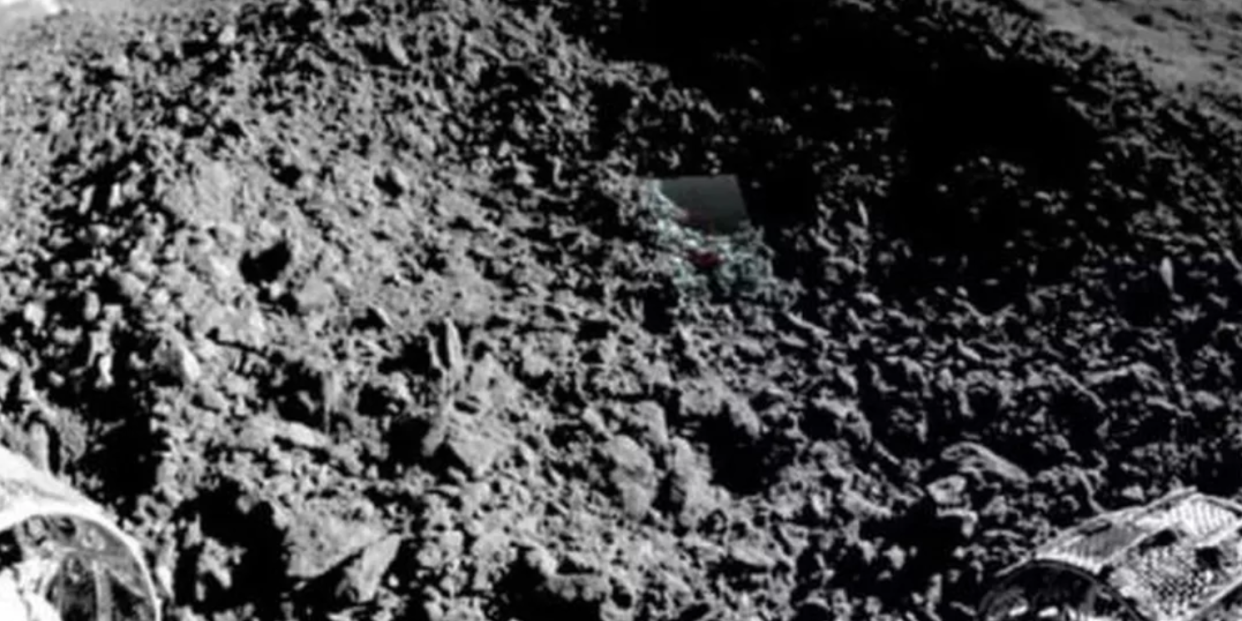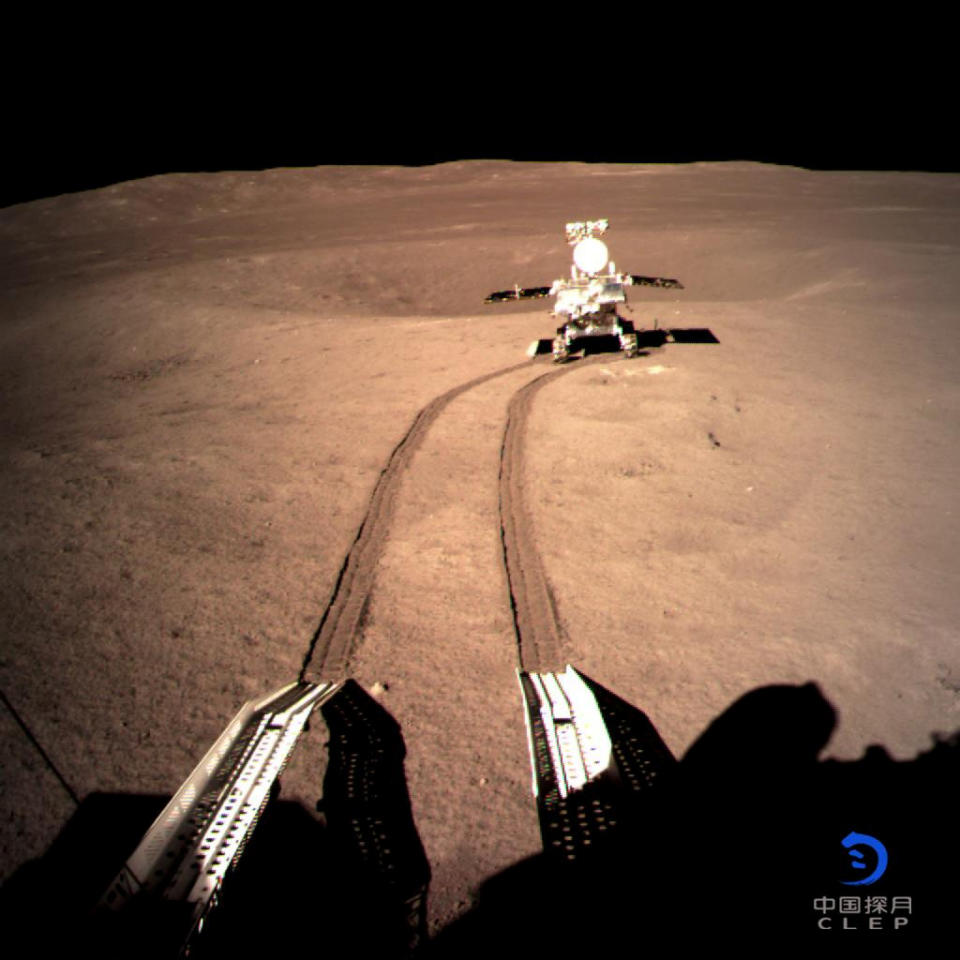China’s lunar rover snaps pictures of 'gel-like' substance on dark side of the moon

China’s Yutu-2 lunar rover has captured images of a strange ‘gel-like’ substance found in a crater on the dark side of the moon.
The rover returned to the crater to capture a clear image of the substance after it was spotted by a team member on Earth earlier this month.
The team shared images of the substance via social media, showing the front wheels of the Yutu-2 rover.
The strange substance was spotted by a team member on Earth, Yu Tianyi, during the rover’s journey across the surface.
READ MORE
Chinese moon rover making tracks on dark side of the moon
‘How dare you?’: Greta Thunberg tears into world leaders
Millions protest in youth-led global climate strike
The team described it as ‘significantly different from the surrounding lunar soil’.
One theory is that it may be an impactite, created when meteors strike objects in space.

The Yutu-2 rover is the first vehicle to explore the dark side of the moon. It has been observed many times from lunar orbits, but never explored on the surface.
It is popularly called the 'dark side' because it cannot be seen from Earth and is relatively unknown, not because it lacks sunlight.
The pioneering landing highlights China's ambitions to rival the US, Russia and Europe in space through manned flights and the planned construction of a permanent space station.
Researchers hope that low-frequency observations of the cosmos from the far side of the moon, where radio signals from Earth are blocked, will help scientists learn more about the early days of the solar system and birth of the universe's first stars.

